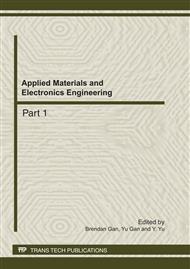p.19
p.23
p.27
p.31
p.35
p.39
p.43
p.47
p.51
Hourglass Control Methods in Numerical Simulation Code RingForm
Abstract:
Hourglass is obviously aroused in cold ring rolling simulation with reduced integration element because of ring vibrating violently and small contact area of ring and rollers. In the developed numerical simulation code named RingForm, two methods are used to control the hourglass. The first method is combination of artificial damping and artificial stiffness. The second is one-point quadrature element with hourglass control, which need not user-defined control parameters. Hourglass energy can be reduced to 3 percent of the internal energy. Using the latter, good elements are acquired, while computational efficiency is obviously lower than the former.
Info:
Periodical:
Pages:
35-38
Citation:
Online since:
October 2011
Authors:
Price:
Сopyright:
© 2012 Trans Tech Publications Ltd. All Rights Reserved
Share:
Citation:


